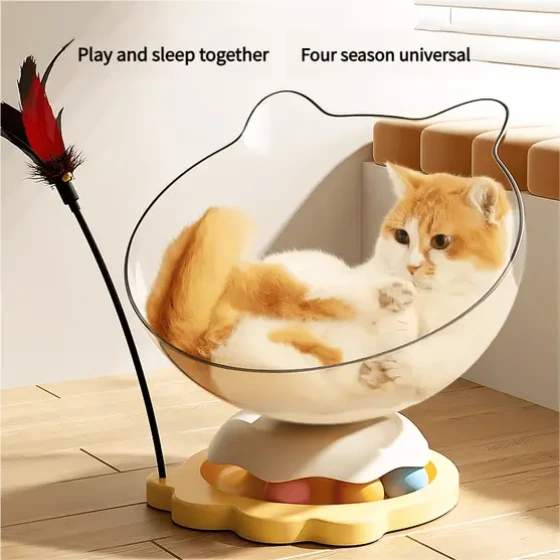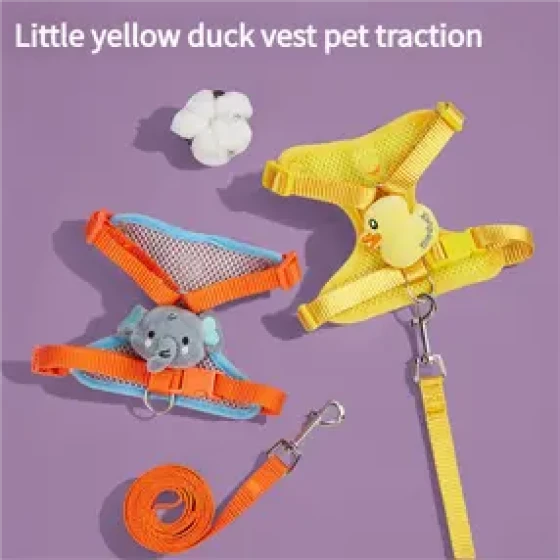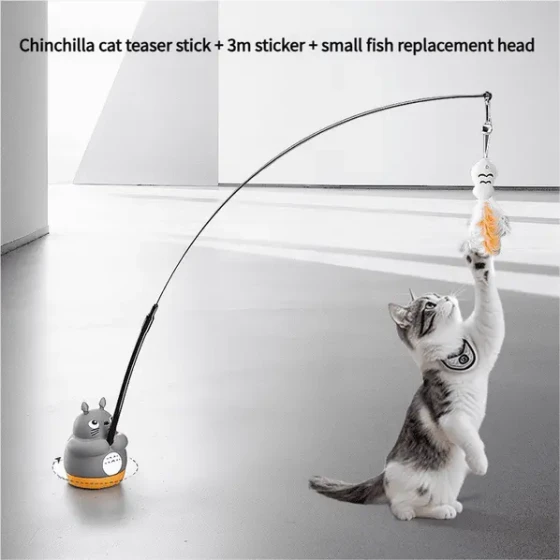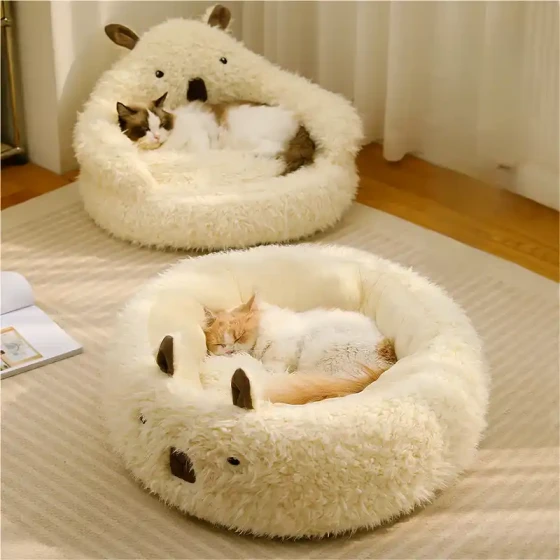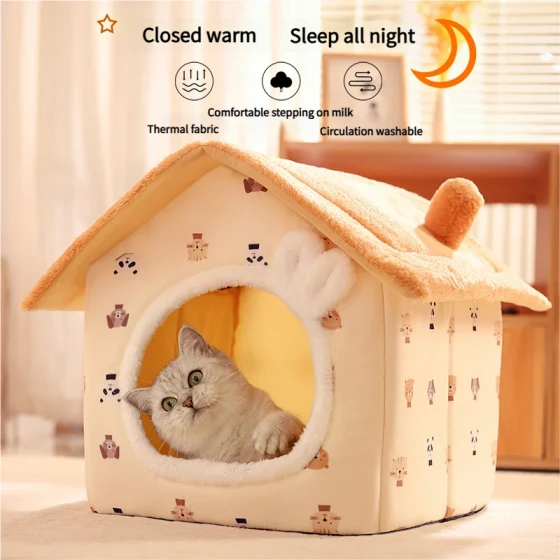Ragdoll Cat Raising Methods_A Complete Guide to Essential Care Tips for Beginners
Raising a ragdoll cat is like hugging a marshmallow; they win countless hearts with their gentle, friendly nature, flowing long fur, and charming blue eyes. As a beginner cat owner, it is crucial to understand the raising methods and precautions for ragdoll cats. This will help you better care for this “little princess” or “little prince,” allowing them to grow up healthy and happy, becoming a close companion in your life.
Raising a ragdoll cat is like nurturing a family member who needs careful attention. From providing a comfortable and safe living environment, to meticulous feeding, grooming, bathing, necessary health management, and ample companionship, every step must be handled with care. Once you master these essentials, you can become a qualified ragdoll cat parent!
Ragdoll cats are a large breed that matures slowly and may take about 4 years to fully grow. Their average lifespan is usually between 12 to 17 years, but with attentive care, ragdoll cats can live even longer. Every detail in daily life is crucial to ensuring your ragdoll cat is healthy and long-lived.

Creating a Warm and Comfortable Home for Your Ragdoll Cat
Providing a safe and comfortable living environment for your ragdoll cat is the first step to raising them well. Imagine, if even the place they live is uncomfortable, how can they feel at ease?
- Safety First: Like caring for a child, you need to "cat-proof" your home. Secure electrical wires, toxic plants (such as lilies, monstera, aloe, etc., which are poisonous to cats), and small objects to prevent ingestion or accidents. Provide a quiet, low-disturbance dedicated space, such as a cozy cat bed or a corner, to make them feel secure—especially when they first arrive at a new home or feel nervous.
- Activity Space: Although ragdoll cats are relatively gentle and like to stay indoors, they still need enough space to play and explore. You can prepare some cat trees, tunnels, etc., to satisfy their climbing and hiding needs.
- Maintain Cleanliness: Cats are naturally clean creatures, and ragdolls are no exception. Regularly cleaning the litter box is very important—preferably cleaning it at least once a day to maintain hygiene and prevent bacteria growth. This also effectively helps prevent some health issues.
Scientific Feeding: Good Food for Strong Health
Ragdoll cats are large and have relatively high nutritional needs. A balanced diet is key to keeping them healthy.
- Choose High-Quality Cat Food: Select high-quality, nutritionally balanced cat food, preferably formulated especially for large breeds or ragdoll cats. Ensure the cat food’s primary ingredient is high-quality animal protein. Consult a veterinarian to determine the suitable feeding amount and frequency based on your ragdoll’s age, weight, and activity level.
- Benefits of Wet Food: Many experts recommend feeding ragdolls wet food because of its high moisture content, which helps cats hydrate and promotes urinary tract health. Adequate water intake is very important for preventing urinary issues. Of course, always provide fresh, clean drinking water. A flowing water fountain can encourage them to drink more.
- Control Weight: Ragdolls tend to gain weight easily, and obesity can lead to many health problems, such as arthritis and heart disease. Control feeding amounts and avoid giving too many treats, especially human food. Regularly monitor your cat’s weight to maintain a healthy body condition.
- Choice of Bowls: It is recommended to use ceramic, stainless steel, or glass bowls for food and water to help prevent chin acne. Also, keep food and water bowls separated, and place the litter box away from the feeding area.
Grooming and Bathing: Maintaining Their "Ethereal" Coat
The most striking feature of ragdoll cats is their thick, silky fur, but this gorgeous “coat” requires meticulous care from the owner.
- Regular Grooming: Although ragdoll fur is relatively less prone to matting, regular brushing is still very important. It reduces shedding, prevents tangling, and helps remove loose hairs, reducing hairball formation. It’s recommended to brush at least two to three times a week, with increased frequency during shedding seasons. Short daily grooming sessions are also a good choice and can strengthen your bond with your cat. Use appropriate combs, such as steel combs or soft-bristle brushes, to make the process comfortable.
- Bathing: Most ragdoll cats do not need frequent baths unless they get very dirty. Usually bathing once a month or as needed is sufficient. Use warm water and mild cat-specific shampoo, avoiding the head area; their face can be wiped with a damp towel.
- Daily Cleaning: Besides grooming and bathing, regularly clean your cat’s ears and eyes and trim their nails. Check ears for dirt or odor, and ensure eyes are clean without discharge. Regular nail trimming prevents damage to furniture and discomfort caused by overly long nails.
Health Management and Prevention of Common Problems
Ragdoll cats are generally a healthy breed, but they can be at risk for some hereditary diseases, such as hypertrophic cardiomyopathy (HCM) and polycystic kidney disease (PKD). Understanding these potential health issues and taking preventive measures is very important.
- Regular Check-ups and Vaccinations: Regular veterinary check-ups and vaccinations are key to ensuring your ragdoll cat’s health. Kittens need a series of basic vaccines, and adult cats require booster shots according to the vet’s advice. Regular checks help detect and treat potential illnesses early.
- Genetic Disease Screening: When purchasing a ragdoll cat from a reputable cattery, ask if they perform genetic testing for diseases like HCM and PKD on breeding cats. Though it cannot guarantee avoidance, it reduces the risk of disease.
- Parasite Prevention: Even indoor cats need regular deworming for internal and external parasites. Kittens generally require monthly deworming, while adults can be dewormed every 3 to 6 months. Consult your vet for the specific schedule.
- Watch for Abnormalities: As an owner, closely observe your cat’s daily behavior and physical condition. If symptoms such as poor appetite, lethargy, difficulty breathing, vomiting, diarrhea, difficulty urinating, or blood in urine appear, take them to the vet promptly.
- Dental Health: Ragdolls also tend to have dental issues such as gingivitis and periodontal disease. Regular tooth brushing with cat-specific toothpaste and toothbrush, and periodic veterinary dental exams and cleanings, can help prevent dental diseases.
Training and Companionship: The Clever "Velcro Cat"
Ragdoll cats are very intelligent and crave interaction; they enjoy being the center of attention and company. They are generally easy to train and can learn to use litter boxes and even perform some tricks.
- Litter Box Training: Most cats have an instinct to bury waste, so litter training is relatively easy. Prepare enough litter boxes at home (usually the number of cats plus one), placed in quiet, convenient locations. When a kitten first arrives, place it in the litter box to familiarize it with the environment. Keeping the box clean is key to success.
- Socialization: Early exposure of kittens to different people and environments helps them grow into well-adjusted, friendly adult cats.
- Provide Toys and Interaction: Though ragdolls are not extremely active, they still need playtime to burn energy and maintain physical and mental health. Provide various toys such as teaser wands, balls, puzzle toys, and spend time playing and interacting with them. Devote at least 20 minutes daily to play or simply be quietly together; this makes them feel happy and loved.
- Avoid Long Periods Alone: Ragdoll cats are very dependent on their owners, and long periods of loneliness may cause anxiety or even separation anxiety. If you are often away from home, consider getting a companion, like another cat or a gentle dog.
- Treat Them Gently: Ragdolls are very sensitive and do not respond well to harsh punishment or loud scolding. Use positive reinforcement training, such as rewarding treats and praise, for better results.
How to Choose a Healthy Ragdoll Cat
If you plan to buy a ragdoll cat, selecting a reputable cattery is very important. Reputable catteries usually focus on the health and lineage of their cats.
- Choose a Reputable Cattery: Look for catteries registered with international cat associations (like CFA, TICA, etc.). Reputable catteries typically breed only a few breeds and don’t sell kittens too young (usually they go to new homes after 4 months old with basic vaccinations and spaying/neutering completed).
- Understand the Health Status of the Parents: Ask if the cattery tests breeding cats for genetic diseases and request relevant health certificates and pedigree documents.
- Visit in Person (if possible): If conditions allow, visit the cattery to inspect the cats’ living environment and health.
Frequently Asked Questions
Q: Do ragdoll cats shed a lot?
A: Ragdolls have dense semi-long fur. Although they don’t shed as much as cats without undercoats, they still shed, especially during shedding seasons (spring and autumn). Regular grooming can effectively control shedding.
Q: Do ragdolls need frequent baths?
A: No. Most ragdolls are very clean and groom themselves. Usually bathing once a month or as needed is enough.
Q: Can ragdoll cats be kept outdoors?
A: It is not recommended to keep ragdolls fully outdoors. They have gentle temperaments, lack survival skills, and are prone to illness or danger. It’s best to keep them as indoor cats with a secure environment.
Q: Are ragdoll cats easy to train?
A: Ragdolls are intelligent and eager to please owners, and generally easy to train, such as litter box use and responding to their name.
Q: How long do ragdoll cats live?
A: The average lifespan of ragdoll cats is between 12 and 17 years. Good care helps them live longer.
Raising a ragdoll cat is a wonderful journey; they are gentle, dependent, and fill your life with their love. As a new owner, you may face some challenges, but as long as you understand their needs and provide enough patience and care, both you and your ragdoll cat can enjoy a happy life together. Remember, they are not just pets—they are your family.

